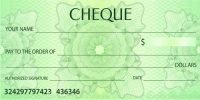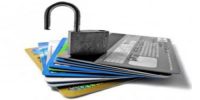The banker, who is liable to pay the value of a cheque of a customer as per the contract, when the amount is due from him to the customer, is called “Paying Banker” or “Drawee Bank”. The payment to be made by him has arisen due to the contractual obligation. He is also called drawee bank as the cheque is drawn to him.
The precautions to be taken by the paying bankers:
In order to safeguard his position, the paying banker must take the following precautions while honoring a cheque:
- A proper form of the cheque:
The cheque must be in proper form. The cheque drawn by the customer must satisfy all the requisites of a valid cheque. Otherwise, the bank does not enjoy the statutory protection given to the paying bank.
- Date of the cheque:
If an undated cheque is presented, a bank must refuse to honor or, either drawer/payee can fill in the date before it’s presented. If a cheque is ante-dated, it may be paid if it has hot become stale by that time. If a cheque is post-dated, he should honor it only on its due date.
- Amount of the cheque:
The amount must be certain and expressed in both words and figures. If the amount is stated only in figures, the banker should return it with a remark “Amount required to be stated in words”. However, if the amount stated in words only, a banker may honor it. If the amount differs, the bank sends back the cheque to the drawer with remark “Amount in words and figure differ”.
- Material alteration:
A paying banker should be very cautious in finding the alteration that may appear on a cheque. Any alteration/correction in cheque must be made by/with the consent of the drawer & confirmed by the full signature to be valid.
- Drawer’s signature:
The banker takes specimen signature of his customers at the time of opening the account. Paying banker must compare the signature with the specimen signature to ascertain that the cheque bears a genuine signature.
- Mutilated cheque:
When a cheque is torn in such a way that it’s clear that the intention was to cancel it, it should be returned with the remark “Mutilated”. When it’s accidentally torn by the holder, confirmation by the drawer is needed.
- Balance in customer’s account:
The paying banker must verify whether the customer has a credit balance in his account to permit the payment of the cheque. Sometimes, a number of cheques could be presented and the credit balance might not be sufficient to meet them all.
- Presentation of cheque during working hour:
Cheque should be presented for payment during working hour only. Cheque presented after banking hour should not be honored because such payment is not considered as payment in due course.
- Type of the cheque:
Before honoring the cheque, the banker must verify whether the cheque presented to him for payment is an open cheque of a crossed cheque. If it is an open cheque, he should make the payment across the counter. If it’s a crossed cheque, he should pay it only when it’s presented through a bank.
- Regularity in the endorsement:
Negotiable instrument is transferred by delivery or by endorsement and delivery. While bearer cheques are transferred by mere delivery, other instruments require endorsement and delivery. When a cheque is presented for payment, the banker must examine whether all the endorsements on the cheques are regular.
- Account:
A customer might have opened two or more accounts in the same branch of a bank. Hence, the paying banker should see that the cheque of one account is not used for withdrawing money from another account.















